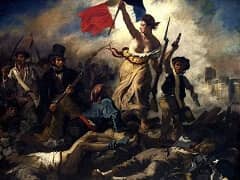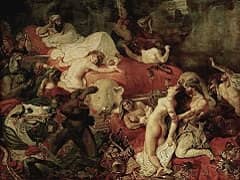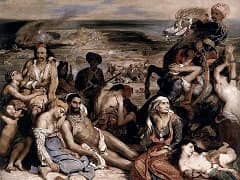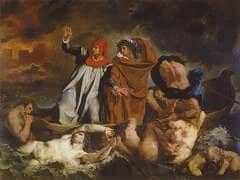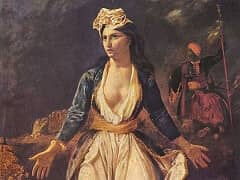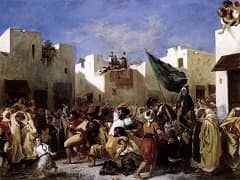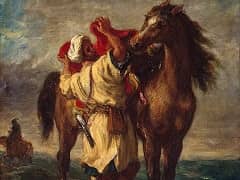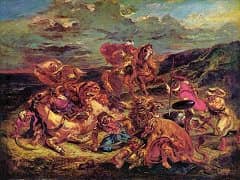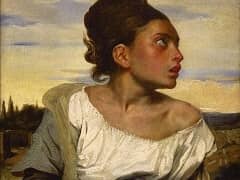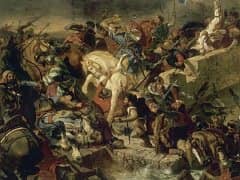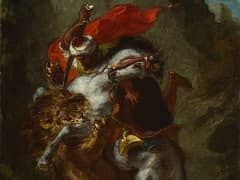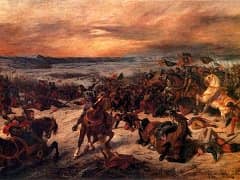The Agony in the Garden by Eugene Delacroix

In The Agony in the Garden, the idea of Christ pushing away the angels (who are themselves frightened of the approaching Passion), with the apostles asleep at left, partly cut off, and, in the shadow, the soldiers preparing to arrest Jesus, renewed the traditional iconography.
The frank and direct treatment also differed from that of the numerous church paintings commissioned for the Ville de Paris under the Restoration, which, at each Salon, made up most of the religious painting. Yet despite its fresh approach, The Agony in the Garden still evoked a more traditional, emotional response, like the work of Murillo, which was very popular at the time. The angels in particular captured the attention of the public and the critics. Louis Vitet, the influential Globe journalist, "while noting some faults, saw in the work the usual characteristics of the painter, "richness of imagination" and a "fortuitous originality." "It is a charming idea, a completely new idea, that tense and dolorous expression of the three angels who come to announce to their divine master his sad destiny. There is indefinable poetry in these three figures: it is truly inspired. What is especially unique to M. Delacroix, what refreshes this tired subject, is to have given the figures of these angels a less meridional character than the Italian painters, but without falling into the heavy and massive type that the Flemish generally give them: these three figures are almost Ossianic, they are altogether heavenly. . . . M. Delacroix has just proved by this attempt that he has not decided to dedicate his talent exclusively to the cult of the ugly and bizarre. We thank him in the name of art, of which he is doubtless destined to become one of the firmest pillars."

